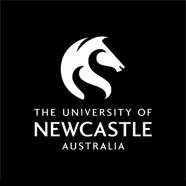| 2025 |
Jeganathan J, Koussis NC, Paton B, Phogat R, Pang J, Mansour L S, Zalesky A, Breakspear M, 'Spurious correlations in surface-based functional brain imaging', Imaging Neuroscience, 3 (2025) [C1]
|
|
|
| 2025 |
Koussis NC, Pang JC, Phogat R, Jeganathan J, Paton B, Fornito A, Robinson PA, Misic B, Breakspear M, 'Generation of surrogate brain maps preserving spatial autocorrelation through random rotation of geometric eigenmodes', Imaging Neuroscience, 3 (2025) [C1]
|
|
|
| 2025 |
Momeni A, Addis DR, Feredoes E, Klepel F, Rasheed MM, Chinchani AM, Koussis NC, Woodward TS, 'Functional Brain Networks Underlying Autobiographical Event Simulation: An Update', Journal of Cognitive Neuroscience, 37, 1083-1146 (2025) [C1]
fMRI studies typically explore changes in the BOLD signal underlying discrete cognitive processes that occur over milliseconds to a few seconds. However, autobiographic... [more]
fMRI studies typically explore changes in the BOLD signal underlying discrete cognitive processes that occur over milliseconds to a few seconds. However, autobiographical cognition is a protracted process and requires fMRI tasks with longer trials to capture the temporal dynamics of the underlying brain networks. In the current study, we provided an updated analysis of the fMRI data obtained from a published autobiographical event simulation study, with a slow event-related design (34-sec trials), that involved participants recalling past, imagining past, and imagining future autobiographical events, as well as completing a semantic association control task. Our updated analysis using Constrained Principal Component Analysis for fMRI retrieved two networks reported in the original study: (1) the Default Mode Network, which activated during the autobiographical event simulation conditions but deactivated during the control condition, and (2) the Multiple Demand Network, which activated early in all conditions during the construction of the required representations (i.e., autobiographical events or semantic associates). Two novel networks also emerged: (1) the Response Network, which activated during the scale-rating phase, and (2) the Maintaining Internal Attention Network, which, while active in all conditions during the elaboration of details associated with the simulated events, was more strongly engaged during the imagination and semantic association control conditions. Our findings suggest that the Default Mode Network does not support autobiographical simulation alone, but it co-activates with the Multiple Demand Network and Maintaining Internal Attention Network, with the timing of activations depending on evolving task demands during the simulation process.
|
|
|
| 2025 |
Couvy-Duchesne B, Frouin V, Bouteloup V, Koussis N, Sidorenko J, Jiang J, Wink AM, Lorenzini L, Barkhof F, Trollor JN, Mangin JF, Sachdev PS, Brodaty H, Lupton MK, Breakspear M, Colliot O, Visscher PM, Wray NR, 'Grey-Matter Structure Markers of Alzheimer's Disease, Alzheimer's Conversion, Functioning and Cognition: A Meta-Analysis Across 11 Cohorts', Human Brain Mapping, 46 (2025) [C1]
Alzheimer's disease (AD) brain markers are needed to select people with early-stage AD for clinical trials and as quantitative endpoint measures in trials. Using 1... [more]
Alzheimer's disease (AD) brain markers are needed to select people with early-stage AD for clinical trials and as quantitative endpoint measures in trials. Using 10 clinical cohorts (N = 9140) and the community volunteer UK Biobank (N = 37,664) we performed region of interest (ROI) and vertex-wise analyses of grey-matter structure (thickness, surface area and volume). We identified 94 trait-ROI significant associations, and 307 distinct cluster of vertex-associations, which partly overlap the ROI associations. For AD versus controls, smaller hippocampus, amygdala and of the medial temporal lobe (fusiform and parahippocampal gyri) was confirmed and the vertex-wise results provided unprecedented localisation of some of the associated region. We replicated AD associated differences in several subcortical (putamen, accumbens) and cortical regions (inferior parietal, postcentral, middle temporal, transverse temporal, inferior temporal, paracentral, superior frontal). These grey-matter regions and their relative effect sizes can help refine our understanding of the brain regions that may drive or precede the widespread brain atrophy observed in AD. An AD grey-matter score evaluated in independent cohorts was significantly associated with cognition, MCI status, AD conversion (progression from cognitively normal or MCI to AD), genetic risk, and tau concentration in individuals with none or mild cognitive impairments (AUC in 0.54¿0.70, p-value < 5e-4). In addition, some of the grey-matter regions associated with cognitive impairment, progression to AD ('conversion'), and cognition/functional scores were also associated with AD, which sheds light on the grey-matter markers of disease stages, and their relationship with cognitive or functional impairment. Our multi-cohort approach provides robust and fine-grained maps the grey-matter structures associated with AD, symptoms, and progression, and calls for even larger initiatives to unveil the full complexity of grey-matter structure in AD.
|
|
|
| 2024 |
Jeganathan J, Paton B, Koussis N, Breakspear M, 'Integrating anatomical and functional landmarks for interparticipant alignment of imaging data', Imaging Neuroscience, 2, 1-16 (2024) [C1]
|
|
|
| 2024 |
Alshehri A, Koussis N, Al-iedani O, Khormi I, Lea R, Ramadan S, Lechner-Scott J, 'Improvement of the thalamocortical white matter network in people with stable treated relapsing-remitting multiple sclerosis over time', NMR IN BIOMEDICINE, 37 (2024) [C1]
|
|
Open Research Newcastle |
| 2024 |
Alshehri A, Koussis N, Al-iedani O, Arm J, Khormi I, Lea S, Lea R, Ramadan S, Lechner-Scott J, 'Diffusion tensor imaging changes of the cortico-thalamic-striatal tracts correlate with fatigue and disability in people with relapsing-remitting MS', EUROPEAN JOURNAL OF RADIOLOGY, 170 (2024) [C1]
|
|
Open Research Newcastle |
| 2023 |
Borne L, Tian Y, Lupton MK, van der Meer JN, Jeganathan J, Paton B, Koussis N, Guo CC, Robinson GA, Fripp J, Zalesky A, Breakspear M, 'Functional re-organization of hippocampal-cortical gradients during naturalistic memory processes', NEUROIMAGE, 271 (2023) [C1]
|
|
Open Research Newcastle |
| 2023 |
Koussis NC, Burgher B, Jeganathan J, Scott JG, Cocchi L, Breakspear M, 'Cognitive Control System Gates Insula Processing of Affective Stimuli in Early Psychosis', SCHIZOPHRENIA BULLETIN, 49, 987-996 (2023) [C1]
Background and Hypothesis: Impairments in the expression, experience, and recognition of emotion are common in early psychosis (EP). Computational accounts of psychosis... [more]
Background and Hypothesis: Impairments in the expression, experience, and recognition of emotion are common in early psychosis (EP). Computational accounts of psychosis suggest disrupted top-down modulation by the cognitive control system (CCS) on perceptual circuits underlies psychotic experiences, but their role in emotional deficits in EP is unknown. Study Design: The affective go/no-go task was used to probe inhibitory control during the presentation of calm or fearful faces in young persons with EP and matched controls. Computational modeling of functional magnetic resonance imaging (fMRI) data were performed using dynamic causal modeling (DCM). The influence of the CCS on perceptual and emotional systems was examined using parametric empirical bayes. Study Results: When inhibiting motor response to fearful faces, EP participants showed higher brain activity in the right posterior insula (PI). To explain this, we used DCM to model effective connectivity between the PI, regions from the CCS activated during inhibition (dorsolateral prefrontal cortex [DLPFC] and anterior insula [AI]), and a visual input region, the lateral occipital cortex (LOC). EP participants exerted a stronger top-down inhibition from the DLPFC to the LOC than controls. Within the EP cohort, increased top-down connectivity between the LOC and AI was associated with a higher burden of negative symptoms. Conclusions: Young persons with a recent onset of psychosis show a disturbance in the cognitive control of emotionally salient stimuli and the suppression of irrelevant distractors. These changes are associated with negative symptoms, suggesting new targets for the remediation of emotional deficits in young persons with EP.
|
|
Open Research Newcastle |
| 2023 |
Alshehri A, Al-iedani O, Koussis N, Khormi I, Lea R, Lechner-Scott J, Ramadan S, 'Stability of longitudinal DTI metrics in MS with treatment of injectables, fingolimod and dimethyl fumarate', NEURORADIOLOGY JOURNAL, 36, 388-396 (2023) [C1]
|
|
Open Research Newcastle |
| 2021 |
Burgher B, Whybird G, Koussis N, Scott JG, Cocchi L, Breakspear M, 'Sub-optimal modulation of gain by the cognitive control system in young adults with early psychosis', TRANSLATIONAL PSYCHIATRY, 11 (2021) [C1]
Executive dysfunctions in early psychosis (EP) are subtle but persistent, hindering recovery. We asked whether changes in the cognitive control system (CCS) disrupt the... [more]
Executive dysfunctions in early psychosis (EP) are subtle but persistent, hindering recovery. We asked whether changes in the cognitive control system (CCS) disrupt the response to increased cognitive load in persons with EP. In all, 30 EP and 30 control participants undertook multimodal MRI. Computational models of structural and effective connectivity amongst regions in the CCS were informed by cortical responses to the multi-source interference task, a paradigm that selectively introduces stimulus conflict. EP participants showed greater activation of CCS regions, including the superior parietal cortex, and were disproportionately slower at resolving stimulus conflict in the task. Computational models of the effective connectivity underlying this behavioral response suggest that the normative (control) group resolved stimulus conflict through an efficient and direct modulation of gain between the visual cortex and the anterior insula (AI). In contrast, the EP group utilized an indirect path, with parallel and multi-region hops to resolve stimulus conflict at the AI. Individual differences in task performance were dependent on initial linear gain modulations in the EP group versus a single nonlinear modulation in the control group. Effective connectivity in the EP group was associated with reduced structural integration amongst those connections critical for task execution. CCS engagement during stimulus conflict is hampered in EP owing to inefficient use of higher-order network interactions, with high tonic gain impeding task-relevant (phasic) signal amplification.
|
|
Open Research Newcastle |
| 2020 |
Sonkusare S, Nguyen VT, Moran R, van der Meer J, Ren Y, Koussis N, Dionisio S, Breakspear M, Guo C, 'Intracranial-EEG evidence for medial temporal pole driving amygdala activity induced by multi-modal emotional stimuli', CORTEX, 130, 32-48 (2020) [C1]
The temporal pole (TP) is an associative cortical region required for complex cognitive functions such as social and emotional cognition. However, mapping the TP with f... [more]
The temporal pole (TP) is an associative cortical region required for complex cognitive functions such as social and emotional cognition. However, mapping the TP with functional magnetic resonance imaging is technically challenging and thus understanding its interaction with other key emotional circuitry, such as the amygdala, remains elusive. We exploited the unique advantages of stereo-electroencephalography (sEEG) to assess the responses of the TP and the amygdala during the perception of emotionally salient stimuli of pictures, music and movies. These stimuli consistently elicited high gamma responses (70¿140 Hz) in both the TP and the amygdala, accompanied by functional connectivity in the low frequency range (2¿12 Hz). Computational analyses suggested that the TP drove this effect in the theta frequency range, modulated by the emotional valence of the stimuli. Notably, cross-frequency analysis indicated the phase of theta oscillations in the TP modulated the amplitude of high gamma activity in the amygdala. These results were reproducible across three types of sensory inputs including naturalistic stimuli. Our results suggest that multimodal emotional stimuli induce a hierarchical influence of the TP over the amygdala.
|
|
Open Research Newcastle |




